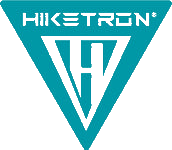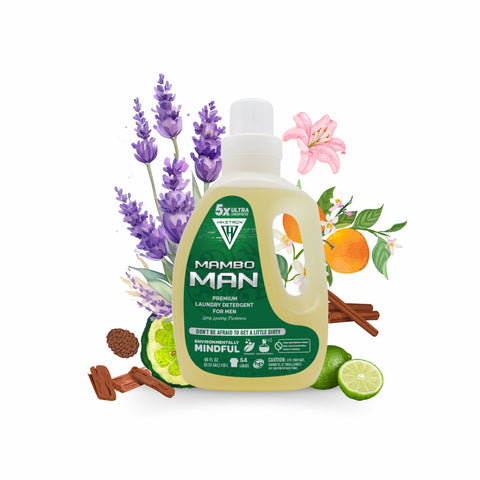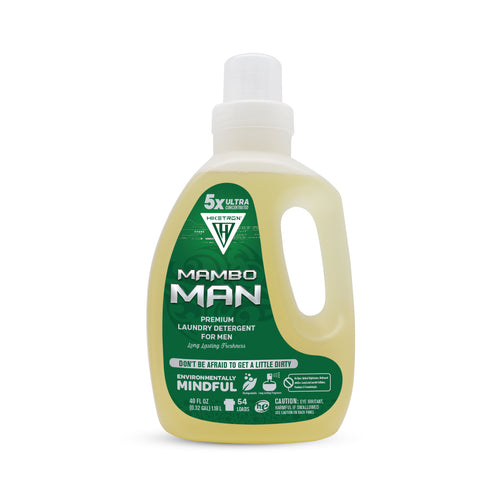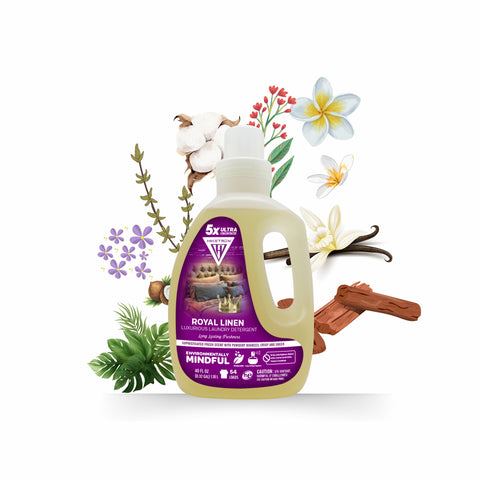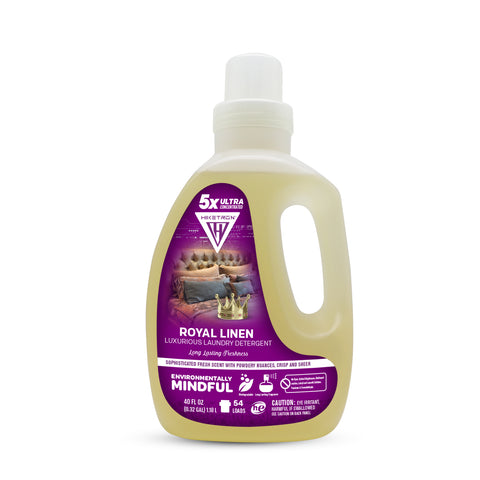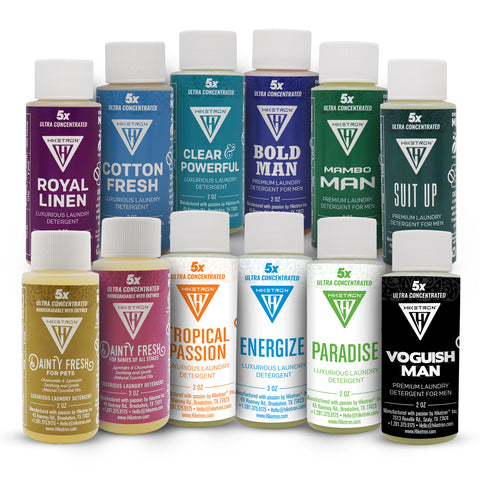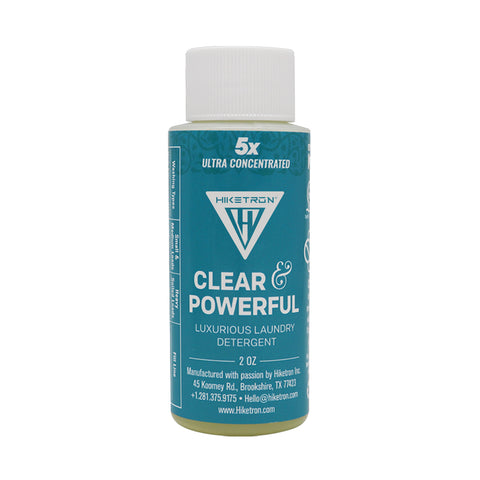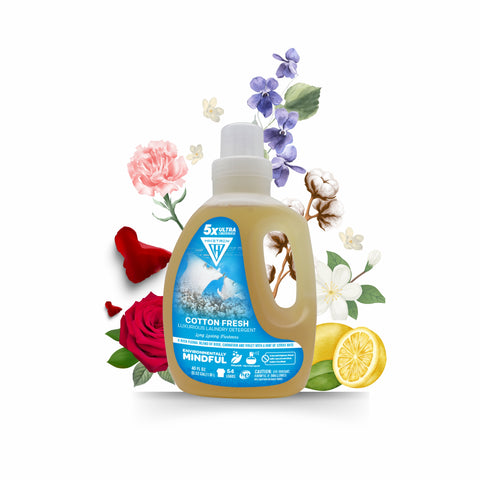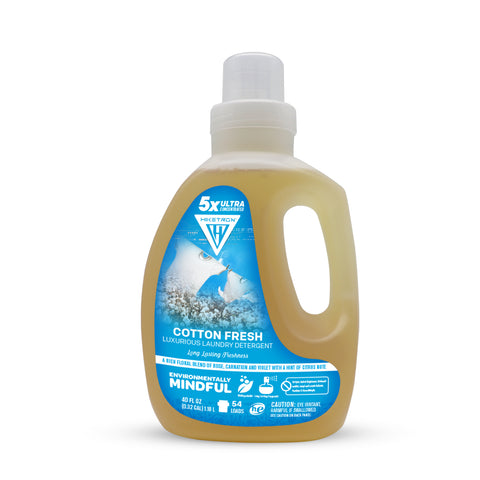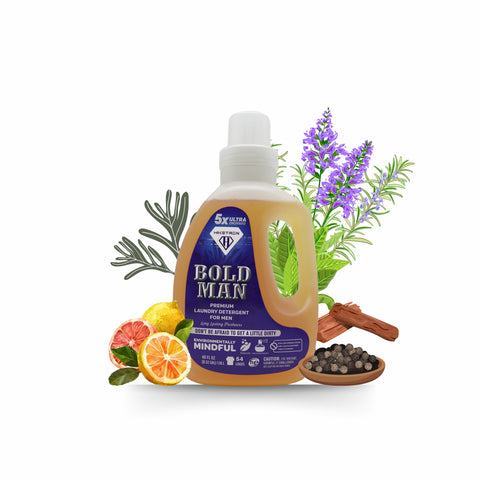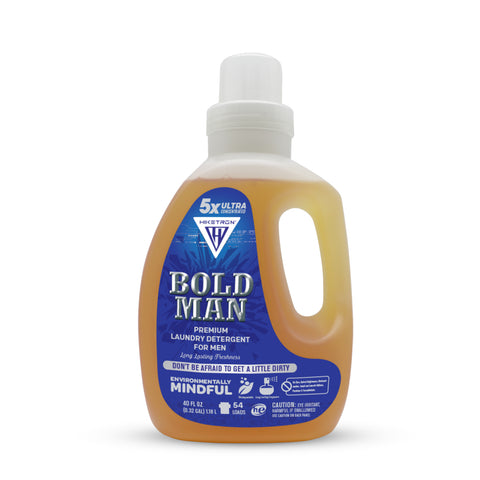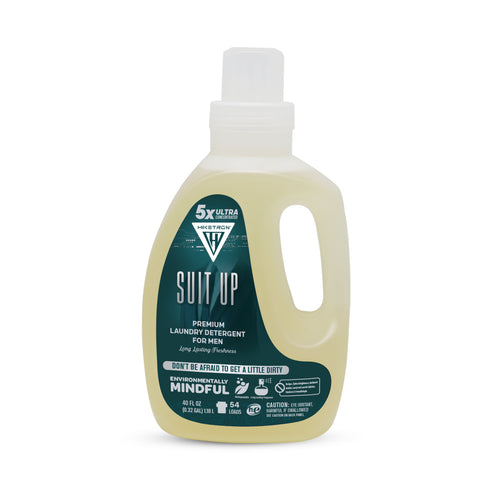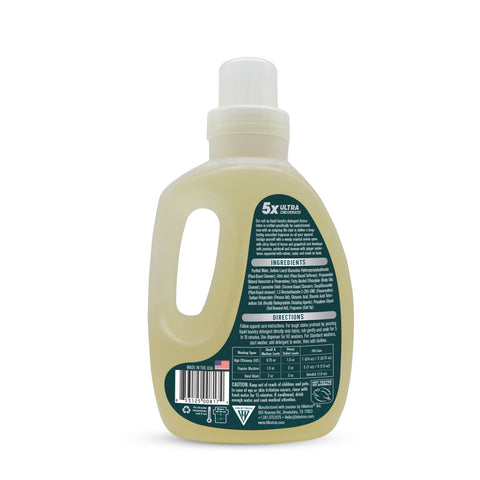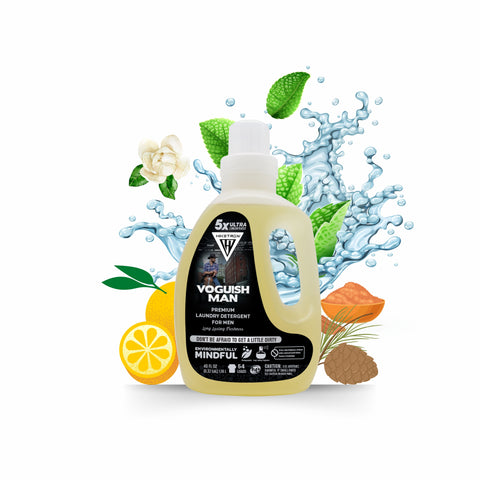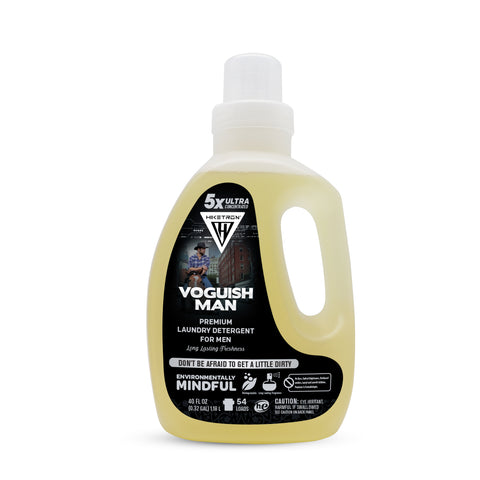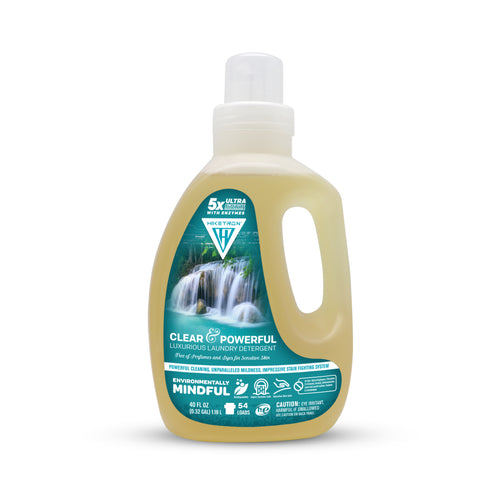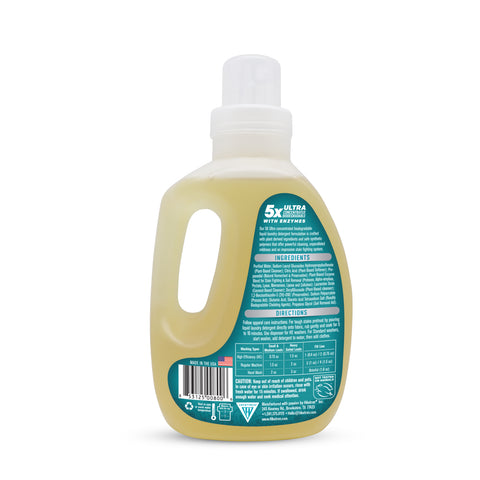INTRODUCTION
Laundry day is a ritual in homes around the globe, a chore familiar yet mysterious in its workings. What happens inside our washing machines is more than a simple splash-and-rinse; it's a finely tuned chemical ballet, where each component of laundry detergent plays a specific role in delivering clean, fresh-smelling clothes. This blog will delve deep into the science of laundry detergents, exploring the evolution from ancient soaps to sophisticated modern formulations that combat stains and preserve fabrics. We will uncover the components of detergent, how they work together, and the environmental impact of our washing habits. Join us as we explore the fascinating world behind the humble act of cleaning clothes.
SECTION 1: UNDERSTANDING DETERGENTS

|
WHAT ARE DETERGENTS?At its core, a detergent is a cleaning agent that differs from soap but shares similar properties. While soap is traditionally made from fats and lye, detergents are typically synthesized from petrochemicals and renewable resources, making them more effective in hard water that contains magnesium and calcium ions. These ions inhibit soap's cleaning capability but do not affect detergents significantly.
|
DETERGENTS ARE COMPOSED OF VARIOUS COMPONENTS,
EACH SERVING A UNIQUE PURPOSE:
SURFACTANTS:
ENZYMES:
BUILDERS:
BLEACHES:

HOW DETERGENTS WORK:

|
EMULSIFICATION:Surfactants surround oils and fats on the fabric, forming micelles(spherical structures) where the hydrophobic tails trap oils, and the hydrophilic heads face outward, making them soluble in water.
|
DISPERSION:Dirt and particles are detached and suspended in the water, prevented from settling back onto the clothes by the charge and solubility of the surfactant molecules.
|
 |
 |
RINSING:The washing machine removes the dirty water, and with it, the detergent molecules carry the suspended dirt and oils.
|
CONCLUSION OF SECTION 1
Understanding the fundamental components of detergents and their mechanisms opens the door to making informed choices about the products we use for our laundry. With this knowledge, consumers can choose products that not only clean effectively but also align with their health and environmental values.
SECTION 2: INGREDIENTS OF LAUNDRY DETERGENTS
SURFACTANTS:
Surfactants are the powerhouse of laundry detergents, providing the primary cleaning action. They are classified based on their ionic properties into four main types, each with unique characteristics and uses:
ANIONIC SURFACTANTS:
These carry a negative charge. They are excellent at removing dirt and stains from fabrics and are the most commonly used surfactants in laundry detergents. Examples include sodium lauryl sulfate (SLS) and sodium laureth sulfate (SLES), known for their foaming properties and effective cleaning performance.
CATIONIC SURFACTANTS:
These carry a positive charge & are less common in detergents as they are primarily used as fabric softeners & conditioners due to their ability to neutralize the negative charges on fabric fibers, reducing static cling.

NONIONIC SURFACTANTS:
These do not carry any charge and are particularly effective at removing oily and greasy stains. Nonionic surfactants are less sensitive to hardwater minerals and are often used in laundry detergents for their gentle nature and low foaming characteristics. Examples include alcohol ethoxylates.
AMPHOTERIC SURFACTANTS:
Capable of acting as either anionic or cationic surfactants depending on the pH of the water, amphoteric are versatile and mild, making them suitable for sensitive skin detergents.

ENZYMES:
- Proteases: Attack proteins, making them excellent for removing blood, egg, grass, and other protein-based stains.
- Amylases: Break down starches into sugars, helping to clean food stains from fabrics that contain starch like pasta sauce or chocolate.
- Lipases: Focus on fats and grease, effectively dealing with butter, oil, and similar oily stains.
- Cellulases: Unique in that they primarily care for the fabric rather than combat stains. Cellulases act on the tiny fibers that emerge from cotton over time (pills), helping to keep the fabric smooth and color bright.
- Builders and Additives: Builders enhance the efficiency of surfactants by softening water and binding it to minerals that can otherwise inhibit cleaning performance. Common builders include:
Phosphates: Excellent at softening water but have decreased in usage due to environmental concerns.
Zeolites: Environmentally friendly alternatives to phosphates, zeolites are effective water softeners that trap calcium and magnesium ions.
Additional additives in detergents may include:
OPTICAL BRIGHTENERS:
Chemicals that absorb UV light and emit blue light, making fabrics appear whiter and brighter.

FRAGRANCES:
Add a pleasant smell to clean laundry.
FABRIC SOFTENERS:
Improve the feel of fabric and reduce static cling.
BLEACHING AGENTS:
Chemicals like peroxide that remove stains by oxidizing them, effectively breaking down color and sanitizing the fabric.

IMPACT OF INGREDIENTS ON THE ENVIRONMENT

The choice of these ingredients has a significant impact not just on cleaning performance but also on environmental sustainability.
Phosphates, for example, can cause eutrophication in water bodies, leading to unwanted algae growth that harms aquatic life. Modern detergents increasingly favor biodegradable and environmentally friendly alternatives such as plant-derived surfactants and enzymes, which offer effective cleaning without adverse environmental impacts.
CONCLUSION OF SECTION 2
The components of laundry detergents are carefully balanced to achieve a formula that effectively cleans a variety of stains and fabric types while considering health and environmental impacts. Understanding these ingredients helps consumers make informed choices about the products they use and their long-term effects on their clothes and the planet.
In this section, we’ve deepened our exploration into the specific ingredients that make up laundry detergents, their roles, and their environmental implications. The next sections would continue to build on this foundation, detailing the scientific innovations in detergent formulation and providing practical advice for optimizing laundry practices.
SECTION 3: ADVANCED DETERGENT FORMULATIONS
SCIENCE OF MICROEMULSIONS BY HIKETRON
A microemulsion is a type of clear, stable, isotropic liquid mixture that can be made up of water, oil, and surfactant, often in conjunction with a cosurfactant. These microscopic droplets suspended in the solution are key to the next level of cleaning efficacy found in advanced detergents.
Microemulsions are particularly efficient in encapsulating dirt, oils, and stains within these droplets, significantly enhancing the ability of the detergent to clean fabrics without the need for high temperatures or aggressive mechanical action.
Microemulsions facilitate the solubilization of oily and greasy stains through their unique structure, where surfactant molecules arrange themselves at the interface between oil and water, reducing interfacial tension and allowing for the spontaneous emulsification of oil in water.
This process effectively breaks down large oil droplets into smaller ones, which can be easily removed during the washing process.
MECHANISM:
The key advantage of microemulsions in laundry detergents includes their ability to operate effectively at lower temperatures, saving energy and preserving the integrity of fabrics. Additionally, they provide excellent cleaning results in hard water conditions and leave minimal residue on clothes.

BENEFITS:
The concepts of HLB and HLD are central to understanding how detergents interact with stains and water. They are crucial for formulating surfactants that are tailor-made for different cleaning purposes.
HYDROPHILIC-LIPOPHILIC BALANCE (HLB) VS. HYDROPHILIC-
LIPOPHILIC DEVIATION (HLD)

HLB (HYDROPHILIC-LIPOPHILIC BALANCE):
This is a measure of the degree to which a surfactant is hydrophilic (water-loving) or lipophilic (oil-loving). Surfactants with a higher HLB value are more soluble in water and are better for removing oil and grease when used in higher water volumes. Those with lower HLB values are more soluble in oils and are used primarily for water-in-oil emulsions.
HLD (HYDROPHILIC-LIPOPHILIC DEVIATION):
HLD is an extension of the HLB system that considers more variables, such as the type of oil, the salinity of the solution, and the temperature. HLD is particularly useful for formulating surfactants that need to perform under specific conditions and is used to predict whether a surfactant will form an oil-in-water or water-in-oil emulsion under given conditions.
ROLE IN DETERGENT PERFORMANCE:
Customization: By adjusting the HLB and HLD values, chemists can create detergents that are customized for specific laundry challenges, such as different types of stains and fabric care requirements.
Effectiveness: Detergents designed with optimal HLB/HLD values for their intended use not only clean more effectively but also require less mechanical action and lower temperatures, which extends the life of the clothes and reduces energy costs.
 |
ENVIRONMENTAL AND HEALTH INNOVATIONS IN DETERGENT FORMULASThe shift towards greener detergents is evident in the latest formulations that prioritize biodegradability and reduced toxicity. PLANT-BASED AND BIODEGRADABLE SURFACTANTS:These surfactants break down more quickly in the environment, reducing pollution and the risk of harm to aquatic life. Examples include surfactants derived from coconut oil, palm oil, and other renewable resources. |
PHOSPHATE-FREE FORMULAS:
Recognizing the environmental impact of phosphates, many detergent manufacturers have reformulated their products to exclude phosphates, thereby reducing the risk of eutrophication in water bodies.
CONCENTRATION AND EFFICIENCY:
Concentrated detergents use less packaging and require less fuel for transportation. Additionally, they are designed to provide optimal cleaning performance while using less product per load, which helps consumers reduce waste.
CONCLUSION OF SECTION 3
Advanced formulations in laundry detergents, underpinned by the science of microemulsions and the precision of HLB and HLD, are revolutionizing how we do laundry. These innovations not only enhance cleaning efficiency and fabric care but also push the boundaries of environmental sustainability in household cleaning products. As we continue to understand and improve the intricate balance of ingredients and their interactions, the future of laundry detergents looks promising thanks to Hiketron’s innovative approach to laundry, with smarter, safer, and more eco-friendly solutions on the horizon.
In this section, we've explored the sophisticated chemistry behind detergent formulations, emphasizing how advancements in microemulsion technology and the precise calculation of HLB and HLD values lead to superior and environmentally friendly cleaning products. The next section would continue to delve into practical applications and consumer advice, ensuring that you, the readers, can make informed choices about their laundry practices based on a solid understanding of detergent science.

SECTION 4: PRACTICAL ASPECTS OF LAUNDRY DETERGENTS
This section will delve into the practical aspects of using laundry detergents effectively, including choosing the right detergent for different needs, usage tips for optimal results, and an overview of innovative detergent technologies that enhance user experience and fabric care.
CHOOSING THE RIGHT DETERGENT
Selecting the appropriate detergent is crucial for achieving optimal laundry results and preserving fabric quality. Here are key factors to consider:
FABRIC TYPE:
Different fabrics require different care. Delicate fabrics like silk and wool benefit from gentler detergents that prevent damage, while sturdy fabrics like cotton can handle stronger formulas.
WATER HARDNESS:
The mineral content of water can affect detergent performance. Special water-softening ingredients or detergents designed for hard water areas can prevent mineral deposits on clothes and enhance cleaning efficiency.
STAIN AND SOIL LEVEL:
Heavily soiled clothes or those with tough stains might need detergents with specific enzymes or higher concentrations of surfactants.
COLOR CARE:
Detergents formulated to protect colors are essential for washing brightly colored or dark fabrics to prevent fading and dye transfer.
MACHINE TYPE:
High-efficiency (HE) washers require low-sudsing HE detergents to prevent excess foam, which can lead to machine malfunctions and poor rinsing.
USAGE TIPS FOR OPTIMAL RESULTS
Maximizing the effectiveness of laundry detergents involves more than just choosing the right type. Proper usage is key:
DOSING CORRECTLY:
Overusing detergent can leave residues on clothes and in machines, while underusing can result in poor cleaning. Always measure detergent according to the manufacturer's guidelines and consider the load size and soil level.
WATER TEMPERATURE:
Some detergents and stains respond better to specific water temperatures. Cold water is energy-efficient and preserves colors but may not be as effective for certain stains or heavy soils, which might require warm or hot water to break down effectively.
PRETREATMENT:
For tough stains, pretreating with a small amount of detergent directly on the stain before washing can improve results. This allows enzymes and surfactants more time to break down the stain.
SORTING LAUNDRY:
Separate items by color and fabric type to reduce the risk of dye transfer and allow for customized washing conditions that best suit each fabric type.

INNOVATIONS IN DETERGENT TECHNOLOGY
The detergent industry continues to evolve, driven by advances in chemistry and consumer demand for higher performance and more sustainable products:
SINGLE-DOSE PODS:Overusing detergent can leave residues on clothes and in machines, while underusing can result in poor cleaning. |
 |
 |
ECO-FRIENDLY FORMULATIONS:Innovations include biodegradable ingredients, plant-based surfactants, and formulas free from harsh chemicals like phosphates and chlorine. These detergents aim to offer powerful cleaning while minimizing environmental impact. |
FABRIC-SPECIFIC DETERGENTS:Specialized detergents designed for specific needs, such as sportswear or baby clothes, offer targeted cleaning and fabric care benefits. |
 |
 |
SCENT AND DYE-FREE OPTIONS:Catering to sensitive skin, these detergents omit potential irritants like |

CONCLUSION OF SECTION 4
Understanding the practical aspects of laundry detergents and how to use them effectively can significantly enhance your laundry routine. By choosing the right detergent, using it correctly, and staying informed about the latest innovations, you can ensure that your laundry not only comes out clean but also lasts longer and impacts the environment less.
The next section would discuss specific case studies and consumer feedback to highlight real-world applications and effectiveness of various detergent products, illustrating the tangible benefits of implementing the insights covered in this detailed guide.
SECTION 5: CASE STUDIES AND CONSUMER FEEDBACK
In this section, we will explore real-world applications and the effectiveness of various detergent products through detailed case studies and analyze consumer feedback to gauge satisfaction and performance. These insights offer practical demonstrations of how the scientific principles and product innovations discussed earlier translate into everyday laundry success.
CASE STUDY 1: PERFORMANCE OF ECO-FRIENDLY DETERGENTS
Background: As environmental concerns grow, many consumers have switched to eco-friendly detergents. However, questions about their cleaning effectiveness compared to traditional detergents persist.
Objective: To compare the cleaning efficacy of a leading eco-friendly detergent against a conventional high-performance detergent on a range of common household stains.
METHODOLOGY:
|
 |
RESULTS:
- The eco-friendly detergent performed comparably in cold water settings, particularly on organic stains like grass and wine.
- The conventional detergent had a slight edge in removing oil and blood, especially in hot water.
- Both detergents preserved fabric color and integrity effectively, with no significant wear after multiple washes.
CONSUMER FEEDBACK:
Positive remarks on the eco-friendly detergent focused on its gentle effect on fabrics and pleasant, non-chemical scent.
Some consumers noted the need for pretreatment with tougher stains when using eco-friendly options.

CASE STUDY 2: EFFICACY OF HIGH-EFFICIENCY (HE) DETERGENTS IN ENERGY-SAVING WASHERS
Background: High-efficiency washers use significantly less water than traditional washers, requiring specially formulated HE detergents.
Objective: To assess the performance of HE detergents in low-water conditions of HE washers, focusing on cleaning power and water conservation.
METHODOLOGY:
- Detergent Types: Three leading HE detergent brands.
- Soil Types: Mixed (includes protein-based, oily, and particulate soils).
- Washing Conditions: HE washers on standard and eco-friendly cycles.
- Evaluation Criteria: Overall cleanliness, rinse effectiveness, and water usage.
RESULTS:
- All tested HE detergents achieved excellent cleanliness without leaving residues, even in eco-friendly cycles.
- Water usage was significantly reduced, aligning with environmental sustainability goals.
- Differences among brands were minimal, indicating a high standard across HE detergent formulations.
 |
CONSUMER FEEDBACK:
|
CONSUMER TRENDS AND FEEDBACK ANALYSIS
This segment will gather and analyze broader consumer feedback from various platforms including online retail reviews, forums, and direct surveys. Key points to address:
- Satisfaction Levels: Assess general consumer satisfaction across different detergent types and brands.
- Common Complaints: Identify any recurring issues or complaints that consumers have regarding detergents, such as skin irritations or ineffective stain removal.
- Suggestions for Improvement: Compile consumer suggestions for product enhancements or new features they desire in their ideal laundry detergent.

CONCLUSION OF SECTION 5
Real-world case studies and direct consumer feedback provide invaluable insights into the practical performance of laundry detergents. These studies not only confirm the effectiveness of scientific advancements in detergent formulations but also highlight areas for future improvement. By understanding consumer needs and experiences, manufacturers can continue to refine their products, ensuring that they meet the evolving demands of users while adhering to environmental and safety standards.
The next section would wrap up the blog with a forward-looking analysis, discussing future trends in detergent technology, ongoing research, and potential market developments, ensuring that readers are well-informed about what to expect in the realm of laundry care.
SECTION 6: FUTURE TRENDS AND RESEARCH IN DETERGENT TECHNOLOGY

As we look toward the future of laundry detergents, ongoing research and emerging trends are shaping the next generation of products. This closing section explores the innovative technologies, sustainability initiatives, and consumer preferences that are likely to influence detergent formulations and marketing strategies in the coming years.
INNOVATIVE TECHNOLOGIES IN DETERGENT FORMULATION
Enzyme Engineering: Advances in biotechnology are enabling the development of more robust and specific enzymes that can operate effectively at lower temperatures and broader pH ranges. These enzymes are designed to target specific stains with high precision, reducing the need for harsh chemicals and energy usage.
Smart Detergents: Hiketron is leading the way in SMART DETERGENTS RESEARCH producing laundry detergents that can adjust their action based on the load characteristics, such as soil level and fabric type. These 'smart' detergents use sensors and microprocessors to optimize cleaning power and minimize waste.
Nanotechnology: The use of nanoparticles in detergents to enhance cleaning efficacy is an exciting area of research. Nanoparticles can provide more effective soil removal and even have antibacterial properties, which could lead to detergents that also sanitize more effectively without damaging fabrics.
SUSTAINABILITY INITIATIVES
Biodegradable Ingredients: The trend towards environmentally friendly products continues to grow, with a focus on fully biodegradable and plant-based ingredients that leave minimal residues in the environment.
Water Conservation: Formulations that require less water for rinsing are becoming more popular, driven by increasing water scarcity issues worldwide. These formulations are not only more sustainable but also reduce energy consumption associated with water heating.
Packaging Innovations: Eco-friendly packaging solutions, including biodegradable plastics and refillable detergent containers, are being developed to reduce plastic waste and carbon footprints associated with detergent sales.
CONSUMER PREFERENCES DRIVING CHANGE
Customization and Personalization: Consumers are increasingly looking for products tailored to their specific needs. This could lead to a rise in custom-formulated detergents, where consumers can choose specific ingredients or properties based on their laundry habits and preferences.
Health and Allergy Awareness: As awareness of allergies and chemical sensitivities increases, there is a growing demand for hypoallergenic detergents free from fragrances, dyes, and irritants.
Transparency and Education: Consumers are demanding greater transparency about the ingredients used in detergents and their environmental impact. This trend is pushing manufacturers to provide more detailed information and educate consumers on how best to use their products for maximum efficiency and minimal environmental impact.
CONCLUSION
| The future of laundry detergents looks bright, with innovations that promise not only cleaner and fresher clothes but also a healthier planet. As we continue to understand and harness the complex chemistry behind detergents, we can look forward to products that are highly effective, environmentally friendly, and customized to meet the diverse needs of consumers worldwide. The ongoing research and development in this field are key to ensuring that our laundry habits contribute positively to our quality of life and the sustainability of our environment. |  |

CALL TO ACTION
Stay informed about the latest developments in laundry detergent technology by following industry news, participating in community discussions, and trying out new products that align with your values and needs. Your choices help shape the future of this important industry.
This comprehensive blog has explored the science, application, and future of laundry detergents in depth. By understanding the full scope of how these everyday products are developed and used, consumers can make more informed decisions that benefit their households and the environment.
SECTION 7: SWOT (STRENGTHS, WEAKNESSES, OPPORTUNITIES, AND THREATS) ANALYSIS OF DIFFERENT LAUNDRY DETERGENT FORMATS
In this section, we will explore four popular laundry detergent formats: standard liquid laundry detergents, ultra-concentrated liquid laundry detergents, laundry detergent sheets, and laundry detergent pods. We will conduct a SWOT analysis (Strengths, Weaknesses, Opportunities, Threats) for each format to assess their performance, consumer convenience, environmental impact, and future potential.
1. STANDARD LIQUID LAUNDRY DETERGENTS
STRENGTHS:
- Versatility: Effective on a variety of stains and fabrics.
- Ease of Use: Easy to measure and control the dosage depending on the load size and soil level.
- Cost-Effective: Less expensive per load compared to pods and sheets.
WEAKNESSES:
- Bulk and Weight: Larger bottles are heavier and harder to handle.
- Overuse: Potential for users to dispense more than needed, leading to waste and extra costs.
- Plastic Waste: High volume of plastic packaging.
OPPORTUNITIES:
- Refill Stations: Retail refill stations could reduce plastic waste and encourage repeated use of existing containers.
- Eco-Friendly Formulas: Development of greener formulations with biodegradable ingredients.
THREATS:
- Competition: From more convenient and eco-friendly detergent formats.
- Environmental Regulations: Increasingly strict regulations regarding chemical use and packaging waste.
2. ULTRA-CONCENTRATED LIQUID LAUNDRY DETERGENTS
STRENGTHS:
- Eco-Friendly Packaging: Smaller bottles mean less plastic and reduced transportation emissions.
- Efficiency: Higher concentration means less water shipped per load, reducing carbon footprint.
- Storage: Takes up less space in storage and on shelves.
WEAKNESSES:
- Higher Cost: Often more expensive per ounce than standard liquids.
- Dosage Control: Potential for under-dosing due to small volume, impacting cleaning effectiveness.
OPPORTUNITIES:
- Innovation in Dosing Technology: Improved dosing mechanisms could ensure optimal use and prevent waste.
- Market Expansion: Potential to capture eco-conscious consumers with targeted marketing.
THREATS:
- Market Penetration: Consumers accustomed to standard liquids may be slow to switch.
- Perception Issues: Concerns about underperformance compared to less concentrated products.
3. LAUNDRY DETERGENT SHEETS
STRENGTHS:
- Convenience: Lightweight, pre-measured sheets that are easy to use.
- Travel-Friendly: Ideal for travel due to its non-liquid form and compactness.
- Zero Waste Packaging: Often comes in fully biodegradable or recyclable packaging.
WEAKNESSES:
- Cleaning Power: May not offer the same cleaning strength as liquid or pod detergents.
- Limited Availability: Not as widely available or recognized as other formats.

OPPORTUNITIES:
- Innovation and Improvement: Potential for formula enhancements to match the efficacy of liquids and pods.
- Niche Markets: Opportunity to market as the best option for travelers and environmentally conscious consumers.
THREATS:
- Consumer Skepticism: May be perceived as less effective, impacting adoption rates.
- Cost: More expensive per load compared to liquids and powders.
4. LAUNDRY DETERGENT PODS
STRENGTHS:
- Ease of Use: No measuring required, which simplifies the laundry process.
- Precise Dosing: Helps prevent product waste and overuse.
- Compact Storage: Smaller packaging than traditional liquids or powders.
WEAKNESSES:
- Safety Concerns: Attractive to children and vulnerable to accidental ingestion.
- Cost per Load: More expensive per load than liquids.
- Chemical Concentration: High concentration of chemicals can be a concern for sensitive skin.
OPPORTUNITIES:
- Product Innovation: Development of child-resistant packaging and gentler formulas.
- Market Growth: Increasing popularity due to convenience and effectiveness.
THREATS:
- Environmental Impact: Non-biodegradable polyvinyl alcohol (PVA) in the pods' coatings can be a pollutant.
- Regulatory Pressure: Restrictions on use due to safety and environmental concerns.


CONCLUSION OF SECTION 7
This SWOT analysis highlights the strengths and weaknesses of each detergent format while also pointing out the opportunities for innovation and the threats they face in a competitive market. For consumers, the choice often boils down to personal preferences regarding convenience, cost, effectiveness, and environmental impact. For the environment, the best options tend to be those that offer concentrated cleaning power with minimal waste, such as ultra-concentrated liquids and detergent sheets with biodegradable packaging. Manufacturers can leverage these insights to address consumer needs and improve product sustainability in the future.
Yes, I agree that ultra-concentrated liquid laundry detergents with an improved dosing mechanism represent an excellent option, especially when considering both effectiveness and environmental impact. Here is why this option stands out:
EFFICIENCY AND EFFECTIVENESSUltra-concentrated detergents provide the same cleaning power as standard detergents but require less product per load. This efficiency is not only economically beneficial but also reduces the frequency of purchases. By improving the dosing mechanism, consumers can easily use the correct amount of detergent necessary for each wash, avoiding the frequent problem of overuse which can lead to residue on clothes and in the machine, as well as unnecessary waste. |
 |
ENVIRONMENTAL BENEFITS
From an environmental perspective, ultra-concentrated detergents offer significant advantages:
Reduced Packaging: They require less packaging material per wash cycle compared to standard detergents. This reduction translates to less plastic waste and lower carbon emissions related to the production and transportation of packaging materials.
Lower Transportation Costs: Because these products are more lightweight and compact due to their concentration, they reduce the energy and resources needed for transportation. Fewer trucks on the road mean fewer emissions.
Less Water Shipped: Since water is a major component in standard detergents, ultra-concentrated formulas that contain less water contribute to a reduction in the product's overall weight and volume, further decreasing transportation impacts.
CONSUMER CONVENIENCE
With advanced dosing mechanisms, such as precision dispensing caps or pumps, consumers can effortlessly measure the exact amount of detergent needed. This convenience helps prevent waste and ensures optimal cleaning results without the guesswork or potential for mess associated with more traditional liquid detergent formats.
OPPORTUNITIES FOR INNOVATION
The focus on ultra-concentrated formulas also opens opportunities for innovation in product formulation and packaging. For instance, developing biodegradable or even edible dosing mechanisms could further reduce the environmental impact. Moreover, the use of plant-based and other eco-friendly ingredients can enhance the appeal to environmentally conscious consumers.

MARKET TRENDS
The market trend towards sustainability and efficiency aligns well with the benefits offered by ultra-concentrated detergents. As consumers become more aware of their environmental footprint and seek out products that offer both performance and sustainability, ultra-concentrated detergents are likely to see increased popularity.
CONCLUSION
|
Article Written & Drafted By
 CEO - HIKETRON |
